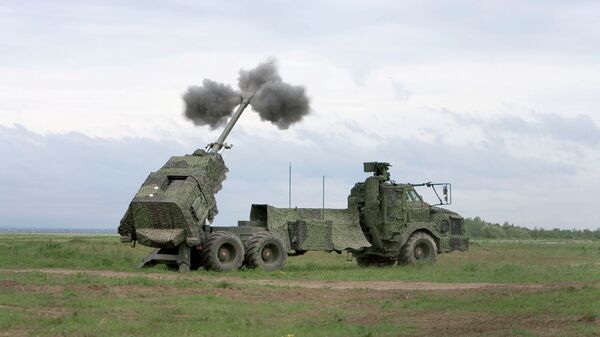
The Swedish Army plans to have three artillery brigades totalling 72 Archer SPHs in 2030. (Försvarsmakten/Marcus Olsson)
Sweden has been rebuilding artillery from scratch over the last decade, following neglect after the end of the Cold War, Janes learnt on the last day of Defence iQ's Future Artillery conference held in Munich from 30 May to 1 June.
Sweden's two artillery brigades with 24 Archer 6×6 self-propelled howitzers (SPHs) each will grow by a third brigade with 24 Archer 8×8 SPHs in 2030. The country has no rocket artillery yet but is focusing on it as there is now political support for deep fires.
Sweden's four manoeuvre brigades have artillery battalions or batteries, with the Gotland task force also having a battery.
One artillery regiment each in northern and southern Sweden is responsible for training crews, which lasts 10 weeks for conscripts, followed by four weeks of exercises.
The Swedish Army has no artillery unmanned aerial vehicles and has a requirement for sensors. It plans to procure artillery fire-control systems in 2025 and weapon-locating radars in 2026.
Also in 2026, Sweden plans to join Artillery Systems Cooperation Activities (ASCA), which use encrypted software to share artillery assets and targeting information and co-ordinate fires among the countries in the programme, which include Denmark, France, Germany, Italy, the Netherlands, Norway, Turkey, the UK, and the US.
Sweden expects Finnish membership in NATO to promote interoperability. However, because Swedish artillery command-and-control is decentralised, it considers it difficult to integrate below the battalion level but expects to be interoperable at the divisional level.
Emphasising the importance of the High North, Sweden sees a need for more artillery exercises there, not only with Finland, which are ongoing, but also with other allies.
Looking to read the full article?
Gain unlimited access to Janes news and more...







